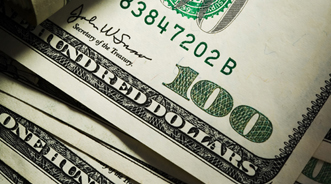Equifax: Q3 Trends Show Consumers Most Confident in Taking out Auto Loans

While data from Equifax showed the total amount of debt consumers absorbed in the third quarter dipped year-over-year, borrowing to make a vehicle purchase gained steam during the time span.
Equifax indicated that across the country, auto bank and auto finance debt rose 7.1 percent during the third quarter compared with the same year ago. And a Texas city is leading the way.
Analysts noted consumers within the Houston metropolitan area that includes Galveston and Brazoria seem the most confident as they took on 10.3 percent more auto debt than a year ago, the largest increase among the top 25 metro areas.
The firm pointed out Minneapolis-St. Paul had the second biggest increase at 9.9 percent while Dallas-Fort Worth came in third at 8.8 percent.
"Generally speaking, consumers are showing discipline and caution about debt coming out of the recession," said Trey Loughran, president of the Personal Solutions unit at Equifax.
"Even though people are taking on debt to get new automobiles, we also know they are driving their cars longer," Loughran continued. "We expect the trend of the ‘disciplined consumer' to continue for some time."
All told, Equifax determined consumers remain cautious about taking on new debt.
Overall consumer debt levels fell $256 billion in the third quarter versus the same period a year ago, according to new Credit Trends data released by Equifax
However, analysts said the 2.28 percent year-over-year decline is the slowest rate of decline since the second quarter of 2009, showing that some of the caution may be starting to lift.
U.S. consumers currently owe $11 trillion across all types of debt with mortgage debt accounting for a little more than three-quarters of that amount. Mortgage debt fell 3.4 percent in the third quarter, compared to the same period a year ago. Non-mortgage consumer debt actually increased 0.7 percent.
The consumer debt trends look different for different parts of the country.
Among the largest 25 metro areas, total consumer debt continued to decline in all but three markets versus the same time a year ago. In Houston, debt climbed 1.37 percent. In Pittsburgh, it increased 1.05 percent. And in Dallas-Fort Worth, debt grew 0.08 percent.
The markets where debt declined at the fastest rates are also some of the areas hit hardest by the housing bust and the recession. The largest declines in consumer debt were in the Las Vegas, Miami-Fort Lauderdale, Sacramento-Yolo and Phoenix-Mesa markets.
"Different parts of the country are at different stages of economic recovery, and that is reflected in how consumers feel about taking on more debt," Loughran said.
"We continue to see debt declining significantly in certain markets, including those in California, Florida, Nevada and Arizona, where the housing bust was particularly severe," Loughran continued. The high number of foreclosures means many consumers have reduced their debt involuntarily.
"Also, consumers who are current on their debt are being more disciplined in taking on new obligations and in how they manage the credit they already have," Loughran went on to say.
While debt levels for mortgages fell in all top 25 markets, the declines were much more severe in Las Vegas (9.6 percent), Miami-Fort Lauderdale (8.8 percent) and Phoenix-Mesa (7.6 percent) than in Houston-Galveston-Brazoria (0.1 percent) and Dallas-Fort Worth (1.4 percent).
Houston and Dallas had the smallest decreases in mortgage debt among Top 25 markets.

 View The Latest Edition
View The Latest Edition

